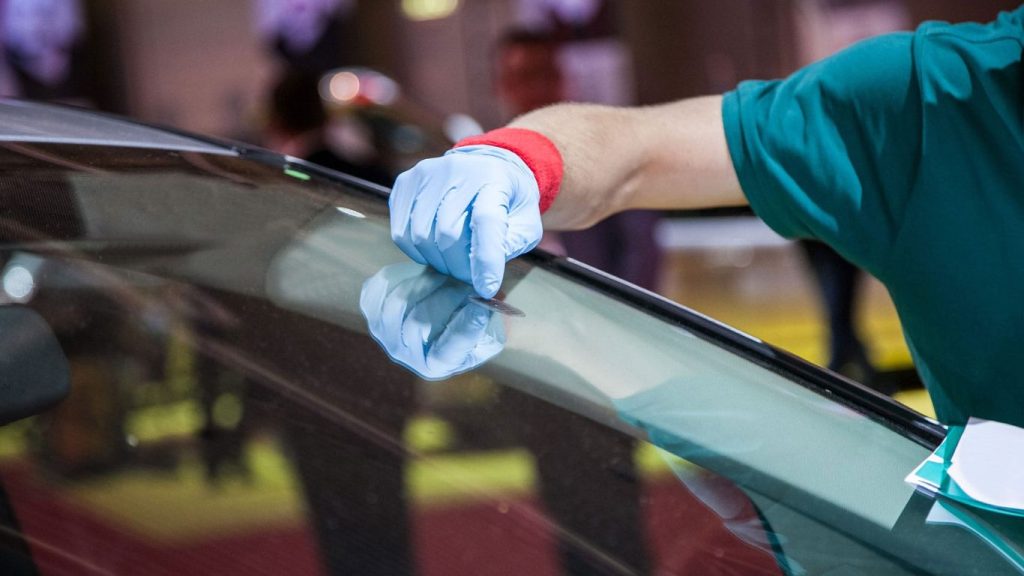Have you ever had that heart-dropping moment when you spot a crack in your windshield? Maybe a rogue pebble flew at your car on the highway, or the weather suddenly changed, leaving your windshield stressed. Whatever the cause, one thing is clear—you can’t ignore it.
A cracked windshield isn’t just about looks; it’s a safety issue. That thin sheet of glass protects you from dust, debris, and, more importantly, accidents. But here’s the big question: Can you repair it yourself, or do you need a professional?
If you’re unsure if a DIY repair kit will work or if you need an expert, you’re in the right place. In this guide, we’ll break down when you can fix it yourself, when you should replace it, and how to stop it from getting worse—all in simple, no-nonsense terms.
By the end, you’ll know exactly what to do to keep your windshield (and your wallet) in good shape.
Understanding Windshield Cracks: What You Need to Know
Not all windshield cracks are the same. Some are tiny and harmless (for now), while others spread faster than gossip at a family gathering. Knowing the difference can save you from costly replacements and potential safety risks.
Common Types of Windshield Cracks
There are many types of windshield cracks, but here are the ones you’ll likely come across:
- Chips: Small dings caused by flying debris—if ignored, they can turn into bigger cracks.
- Star Breaks: Cracks that spread out like a spider web, usually from a direct impact.
- Bullseye Cracks: Circular damage (like a dartboard) caused by a rock or object hitting the glass.
- Stress Cracks: These appear without an impact, often due to extreme temperature changes.
For insights on preventing cracks from worsening, refer to our guide on How to Stop Windshield Crack From Spreading.
Want a detailed breakdown? Check out our complete guide on Types of Windshield Cracks and how to handle them.
DIY Windshield Repair: Fixing Small Cracks & Chips Like a Pro
Got a small crack or chip on your windshield? The good news is—you might not need an expensive replacement just yet. If the damage is minor (smaller than a quarter), you can fix it yourself with a windshield repair kit. Here’s how to do it step by step.
Step 1: Clean the Area Properly
Before you start, make sure the cracked area is dirt-free.
✅ Use a microfiber cloth to wipe away dust and debris.
✅ If needed, use rubbing alcohol to remove grease or oil.
❌ Don’t use water—moisture can mess up the repair.
Step 2: Use a Windshield Repair Kit
A standard windshield repair kit contains:
🔹 Resin – Fills the crack and prevents it from spreading.
🔹 Curing Strips – Helps the resin harden properly.
🔹 Applicator/Injector – Ensures the resin goes deep into the crack.
These kits are available at auto stores and online, and they usually cost between $10-$20.
If you’re dealing with a chipped windshield, our article on How to Fix Chipped Windshield offers detailed instructions.
Step 3: Apply the Resin & Let It Cure
Now comes the actual repair:
1️⃣ Position the applicator over the crack and inject the resin.
2️⃣ Let it settle for a few minutes so the resin seeps into the damaged area.
3️⃣ Apply the curing strip over the crack and leave the car in direct sunlight (or use a UV light) for 20-30 minutes.
🔹 Why is curing important? The resin needs UV light to harden properly, creating a strong seal.
Step 4: Polish & Inspect
Once the resin is fully cured:
✅ Peel off the curing strip and use a razor blade to scrape off excess resin.
✅ Polish the area gently with a glass cleaner for a smooth finish.
✅ Check your work – If the crack is still visible, you may need to repeat the process.
Is DIY Repair Always the Best Option?
If done right, a DIY repair can prevent further damage and save you money. However, if the crack is large, deep, or in your line of sight, a professional repair or replacement is the safer bet.
When to Call a Professional: Know When DIY Won’t Cut It
If your windshield crack is longer than 6 inches, spreading rapidly, or located near the edges, it’s time to call a professional. Large cracks weaken the glass, affecting your car’s structural integrity and putting you at risk in an accident. If the damage is in your line of sight, even the best DIY fix won’t help. This can be dangerous when driving. The cost of fixing or replacing your windshield depends on several factors.
These include your insurance coverage, how bad the damage is, and the type of windshield your car has, like regular, tinted, or heated. Many insurance policies cover repairs for free or with minimal cost, so it’s worth checking before delaying the fix. In short, if the crack is big, deep, or growing, don’t take chances—get it professionally repaired or replaced to ensure your safety.
For expert assistance with windshield issues beyond DIY repair, explore our Windshield Repair Services.
Preventing Future Cracks: Keep Your Windshield in Top Shape
Watch Out for Temperature Changes
Sudden shifts in temperature can stress the glass, causing cracks.
❌ Don’t pour hot water on an icy windshield—it can lead to stress cracks.
✔️ Instead, use a defroster gradually or a windshield cover in winter.
Regular maintenance, such as timely Windshield Wiper Replacement, can also contribute to windshield longevity.
Drive Carefully on Gravel Roads
Loose stones and debris can fly up and hit your windshield, leading to chips.
✔️ Keep a safe distance from other vehicles on unpaved roads.
✔️ Consider mud flaps if you often drive on gravel to reduce debris impact.
Use a Glass Protectant Coating
A windshield protection film or hydrophobic coating can strengthen the glass and reduce the risk of cracks.
✔️ These coatings help repel dirt, water, and small debris, reducing wear and tear.
By following these simple steps, you’ll reduce the chances of cracks forming and keep your windshield strong for the long haul.
Frequently Asked Questions
No, toothpaste does not fix windshield cracks. It might temporarily reduce the visibility of minor scratches, but it won’t stop a crack from spreading or restore the strength of the glass.
Not instantly, but it’s not impossible. A small crack can weaken the structural integrity of the glass, making it more likely to break under pressure, sudden temperature changes, or impact from another object.
Not necessarily. Coverage depends on your policy. Comprehensive insurance often covers repairs, but you may have to pay a deductible for replacements. Always check with your insurer before assuming it’s covered.
While super glue or nail polish might temporarily hold a small crack, they are not real fixes. They don’t provide the strength that professional resin does, and they could make professional repairs more difficult later.
It depends on where you live. Some states and countries have strict laws about driving with windshield cracks, especially if they obstruct the driver’s view. If you’re unsure, check local traffic laws.
Yes! Direct sunlight or extreme heat can cause the glass to expand, making cracks grow faster. Parking in the shade or using a sunshade can help slow down the damage.
Most of them, yes. Even if a crack seems small, factors like vibrations, road bumps, and temperature changes can cause it to grow. That’s why it’s best to repair it early before it gets worse.
It’s tricky. Moisture can seep into the crack, preventing the resin from bonding properly. If you must repair a crack in humid conditions, dry the area completely before applying any repair solution.





